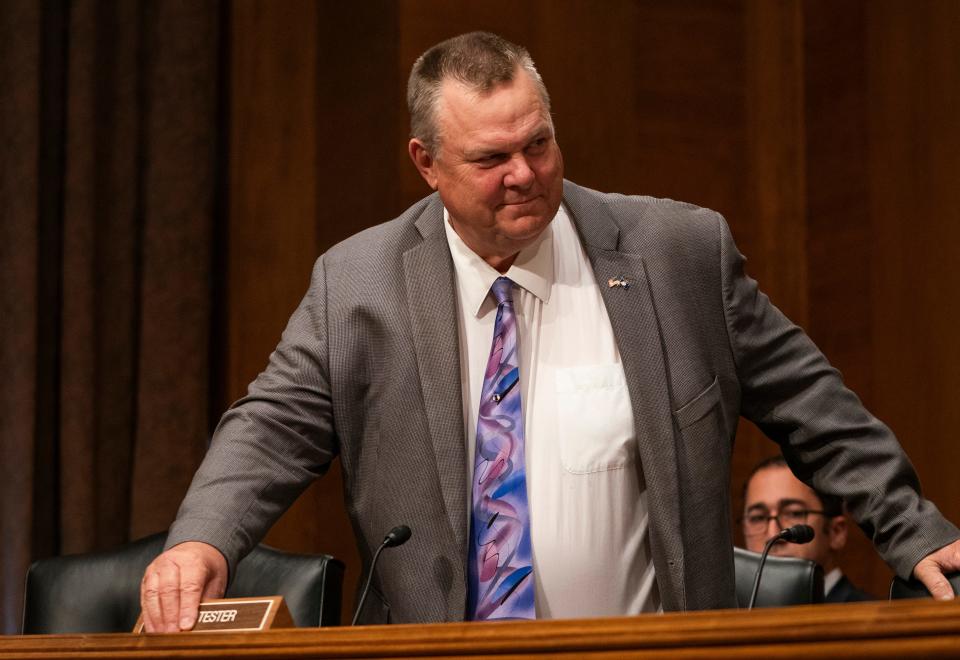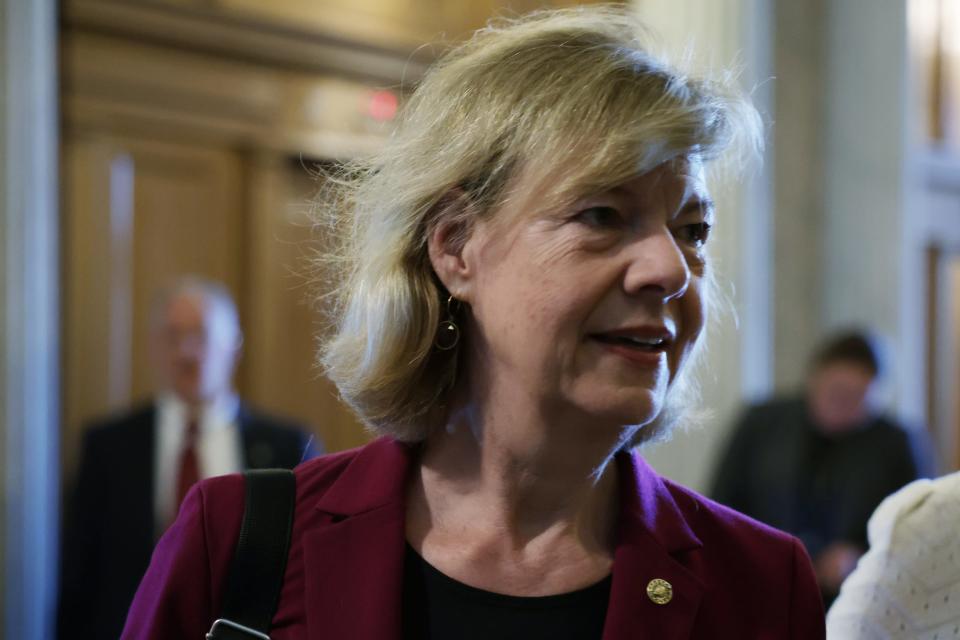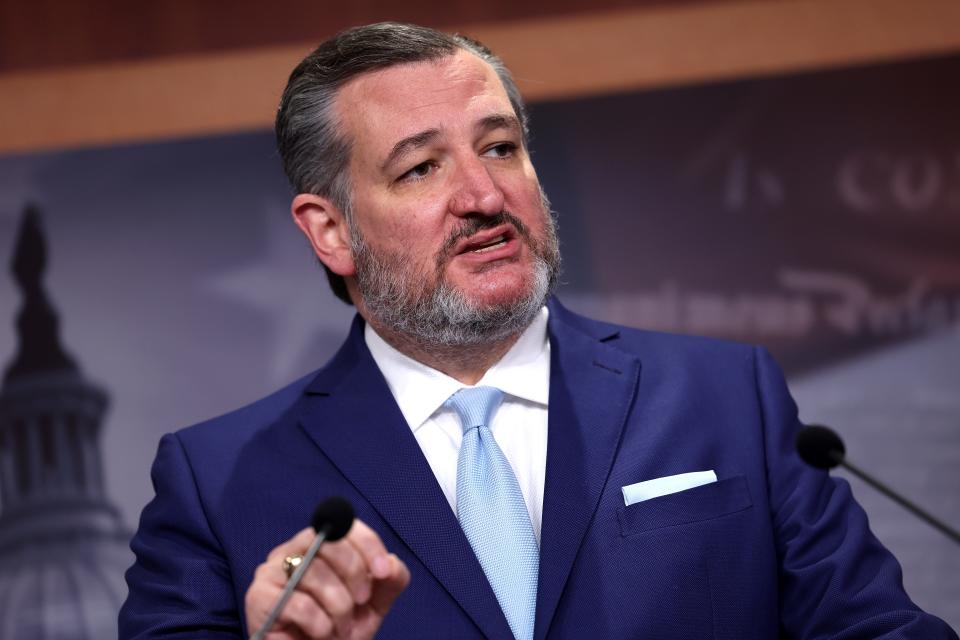Toss-up races and Democratic battlegrounds: Who will pick up control of the Senate in 2024?
WASHINGTON – Around a third of U.S. Senate seats are up for grabs this fall, and Republicans are feeling good about their chances of bringing the chamber back under their control.
Democrats currently control the Senate with a narrow 51-49 majority. A rocky landscape ahead of elections in the fall was made even tougher for Democrats when incumbent Sen. Joe Manchin, D-W.V., announced earlier this year that he would not run for reelection – essentially handing his seat to Republicans in the deeply conservative state.
Assuming West Virginia goes to a GOP senator, Republicans may only need former President Donald Trump to win the White House to effectively control the upper chamber. The vice president acts as a tiebreaker when the Senate is split 50-50, so if they win one of three "toss up" seats – all currently held by senators who vote with Democrats – they could control the chamber with Trump in office.
Here are the races to watch as election season heats up.

The toss-ups
Three Senate seats are considered anybody's game, dubbed a "toss-up" by the non-partisan Cook Political Report: Arizona, Montana, and Ohio.
Democrat-turned-independent Sen. Kyrsten Sinema of Arizona is retiring after her term ends, leaving her swing-state seat up for grabs. President Joe Biden narrowly won Arizona in 2020, and Trump won it in 2016.
The Republican candidate is likely to be former TV news anchor Kari Lake, who ran for governor in Arizona in 2022. She gained national attention in 2020 by falsely claiming that Trump won that year's presidential election.
Progressive U.S. Rep. Ruben Gallego, D-Ariz., is the likely Democratic nominee. He's a Latino, a Harvard graduate and a former Marine who served in Iraq. The state's primaries are July 30.
In Montana, incumbent Democratic Sen. Jon Tester will likely be up against Tim Sheehy, a wealthy businessman and former Navy SEAL, in a state that has leaned increasingly Republican in recent years. A Democratic presidential candidate hasn't won Montana since 1992.
But Tester – a third-generation Montanan and farmer – has held on through three Senate election cycles and has a real shot of doing so again, experts predict.
And in Ohio, incumbent Democratic Sen. Sherrod Brown will be seeking a fourth term in another increasingly Republican state. Brown is well-known in Ohio and has developed a populist reputation that will likely help him with the state’s working-class voters.
He’ll be up against another wealthy businessman endorsed by Trump: Bernie Moreno, who owns a network of car dealerships. A Democratic group paid $2.7 million to promote him in the state's competitive GOP primary – an indicator that Democrats feel Moreno would be an easier target in the general election than his more moderate GOP rivals.

The Democratic battlegrounds
Four seats currently held by Democratic senators are in play in blue-leaning states, giving the party a better chance of keeping the seats. But Republicans could still make a steal in Michigan, Nevada, Pennsylvania and Wisconsin.
Sen. Debbie Stabenow, D-Mich., is retiring at the end of her term, making a seat available. Rep. Elissa Slotkin, D-Mich., is the clear Democratic nominee. She's an ex-CIA analyst and won three tough House races in politically mixed central Michigan.
Michigan’s Republican primary is an open field of candidates across the conservative spectrum: Libertarian and outspoken Trump critic former Rep. Justin Amash is running, as is former GOP Rep. Peter Meijer, who voted to impeach Trump after Jan. 6, 2021 and was defeated in the primary by a Trump-backed candidate in 2022.
But the clear frontrunner is Trump-endorsed former Rep. Mike Rogers, who served seven terms in the House and was the chair of the House Intelligence Committee.
Incumbent Sen. Jacky Rosen, D-N.V., will fight to keep her seat for a second term against political newcomer Sam Brown, who tells the story of his Army service in Afghanistan in 2008, where he survived severe burns from a bomb.
Wisconsin’s race pits two-term Sen. Tammy Baldwin, D-Wisc., against businessman Eric Hovde. Hovde's wealth brings significant personal funding ability, but he may be vulnerable to Democratic attacks due to ties to California.
And Sen. Bob Casey, D-Penn., will defend his seat after three terms in the upper chamber. He benefits from widespread name recognition, especially as his father with the same name was the state’s former governor. He’s up against hedge fund executive David McCormick, who ran against Mehmet Oz in 2022.

The longshots
Three states are unlikely to flip, but they're just vulnerable enough to be a target for the other side in this tight election: Maryland, Texas and Florida.
Solid blue Maryland was likely off the table for Republicans, until former GOP Gov. Larry Hogan threw his hat into the ring. Hogan – who was personally recruited to run by Senate Republican Leader Mitch McConnell, R-Ky. – brings a moderate brand and big name recognition to the race. Democrats running include U.S. Rep. David Trone and Prince George’s County Executive Angela Alsobrooks.
GOP strongholds Texas and Florida provide the only chances for Democrats to try to steal a seat instead of just defending their own. Sen. Ted Cruz, R-Texas, came close to defeat in 2018 when he ran against Beto O’Rourke. He’ll face Rep. Colin Allred, who has beat an incumbent Republican before and broken with Democrats on border issues.
Sen. Rick Scott, R-Fla., will face former Rep. Debbie Mucarsel-Powell in a state that will also be voting on a referendum on abortion rights – which has driven Democratic voters to the polls in the past.
This article originally appeared on USA TODAY: Senate races to watch in 2024: Arizona, Montana and Ohio are toss-ups
